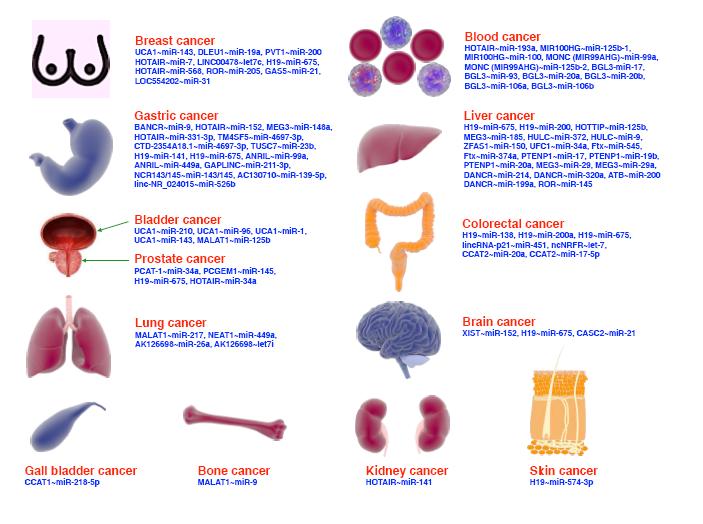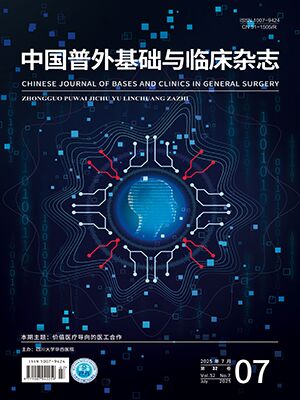【Abstract】ObjectiveTo construct the eukaryotic expressing plasmid of tumor necrosis factor-related apoptosisinducing ligand(TRAIL),and study its inhibitory effect on hepatic tumor which implanted subcutaneously in nude BALB/c mice.
MethodsTotal RNA of U937 cell was extracted, and its extracellular domain (114-281aa) was amplified by RTPCR, then signal peptide was ligated. The recombinant secreting plasmid for TRAIL was constructed successfully which was confirmed by enzyme cleavage identification and sequencing identification. Liver cancer cell (strain No.7402) was implanted subcutaneously in 32 nude BALB/c mice. These mice were randomly divided into two groups: study group and control group. The mice in study group received muscular injection of plasmids for transfection, and the mice in control group received the injection of normal saline at the same time. The size of implanted tumors were measured continuously till the day of sacrificing, tumor cell apoptosis effect was examined by TUNEL method.
ResultsIn study group,tumor volume was smaller than that in control group and the bluepurple apoptosis cells were observed under microscope.
ConclusionTRAIL plasmid can induce apoptosis of liver cancer cell and can inhibit the growth of liver tumor.
Citation:
WANG Zhengbing,JIA Xiaoqin,CHEN Bing,LI Houda.. Construction of Secreting Plasmid for TRAIL and Its Inhibitory Effect on Liver Cancer. CHINESE JOURNAL OF BASES AND CLINICS IN GENERAL SURGERY, 2005, 12(3): 261-264. doi:
Copy
Copyright © the editorial department of CHINESE JOURNAL OF BASES AND CLINICS IN GENERAL SURGERY of West China Medical Publisher. All rights reserved
| 1. |
Wiley SR, Schooley K, Smolak PJ, et al. Identification and characterization of a new member of the TNF family that induces apoptosis [J]. Immunity, 1995; 3(6)∶673.
|
| 2. |
Gura T. How TRAIL kills cancer cells, but not normal cells [J]. Science, 1997; 277(5327)∶768.
|
| 3. |
Wu Z, O’Reilly MS, Folkman J, et al. Suppression of tumor growth with recombinant murine angiostatin [J]. Biochem Biophys Res Commun, 1997; 236(3)∶651.
|
| 4. |
韩锐主编.肿瘤化学预防及药物治疗 [M]. 北京医科大学协和医科大学联合出版社, 1991∶424~425.
|
| 5. |
陆云飞,覃新干,曾健.肿瘤坏死因子α基因转导的人肝癌细胞疫苗对小鼠肝癌移植瘤的影响 [J]. 中国普外基础与临床杂志,2003; 10(4)∶366.
|
| 6. |
石景森,周连锁,朱爱军. 肿瘤坏死因子及其受体在胆囊癌及结石性胆囊炎中的表达 [J]. 中国普外基础与临床杂志,2004; 11(1)∶40.
|
| 7. |
Xu SQ, ElDeiry WS. p21(WAF1/CIP1) inhibits initiator caspase cleavage by TRAIL death receptor DR4 [J]. Biochem Biophys Res Commun, 2000; 269(1)∶179.
|
| 8. |
Hu WH,Johnson H,Shu HB.Tumor necrosis factorrelated apoptosisinducing ligand receptors signal NFkB and JNK activation and apoptosis through distinct pathways [J]. J Biol Chem, 1999; 274(43)∶30603.
|
| 9. |
Ashkenazi A, Dixit VM. Death receptor: signaling and modulation [J]. Science, 1998; 281(5381)∶1305.
|
| 10. |
Srivastava RK. TRAIL/Apo2L: mechanisms and clinical applications in cancer [J]. Neoplasia, 2001; 3(6)∶535.
|
| 11. |
Smyth MJ, Takeda K, Hayakawa Y, et al. Nature’s TRAIL——on a path to cancer immunotherapy [J]. Immunity, 2003; 18(1)∶1.
|
- 1. Wiley SR, Schooley K, Smolak PJ, et al. Identification and characterization of a new member of the TNF family that induces apoptosis [J]. Immunity, 1995; 3(6)∶673.
- 2. Gura T. How TRAIL kills cancer cells, but not normal cells [J]. Science, 1997; 277(5327)∶768.
- 3. Wu Z, O’Reilly MS, Folkman J, et al. Suppression of tumor growth with recombinant murine angiostatin [J]. Biochem Biophys Res Commun, 1997; 236(3)∶651.
- 4. 韩锐主编.肿瘤化学预防及药物治疗 [M]. 北京医科大学协和医科大学联合出版社, 1991∶424~425.
- 5. 陆云飞,覃新干,曾健.肿瘤坏死因子α基因转导的人肝癌细胞疫苗对小鼠肝癌移植瘤的影响 [J]. 中国普外基础与临床杂志,2003; 10(4)∶366.
- 6. 石景森,周连锁,朱爱军. 肿瘤坏死因子及其受体在胆囊癌及结石性胆囊炎中的表达 [J]. 中国普外基础与临床杂志,2004; 11(1)∶40.
- 7. Xu SQ, ElDeiry WS. p21(WAF1/CIP1) inhibits initiator caspase cleavage by TRAIL death receptor DR4 [J]. Biochem Biophys Res Commun, 2000; 269(1)∶179.
- 8. Hu WH,Johnson H,Shu HB.Tumor necrosis factorrelated apoptosisinducing ligand receptors signal NFkB and JNK activation and apoptosis through distinct pathways [J]. J Biol Chem, 1999; 274(43)∶30603.
- 9. Ashkenazi A, Dixit VM. Death receptor: signaling and modulation [J]. Science, 1998; 281(5381)∶1305.
- 10. Srivastava RK. TRAIL/Apo2L: mechanisms and clinical applications in cancer [J]. Neoplasia, 2001; 3(6)∶535.
- 11. Smyth MJ, Takeda K, Hayakawa Y, et al. Nature’s TRAIL——on a path to cancer immunotherapy [J]. Immunity, 2003; 18(1)∶1.




